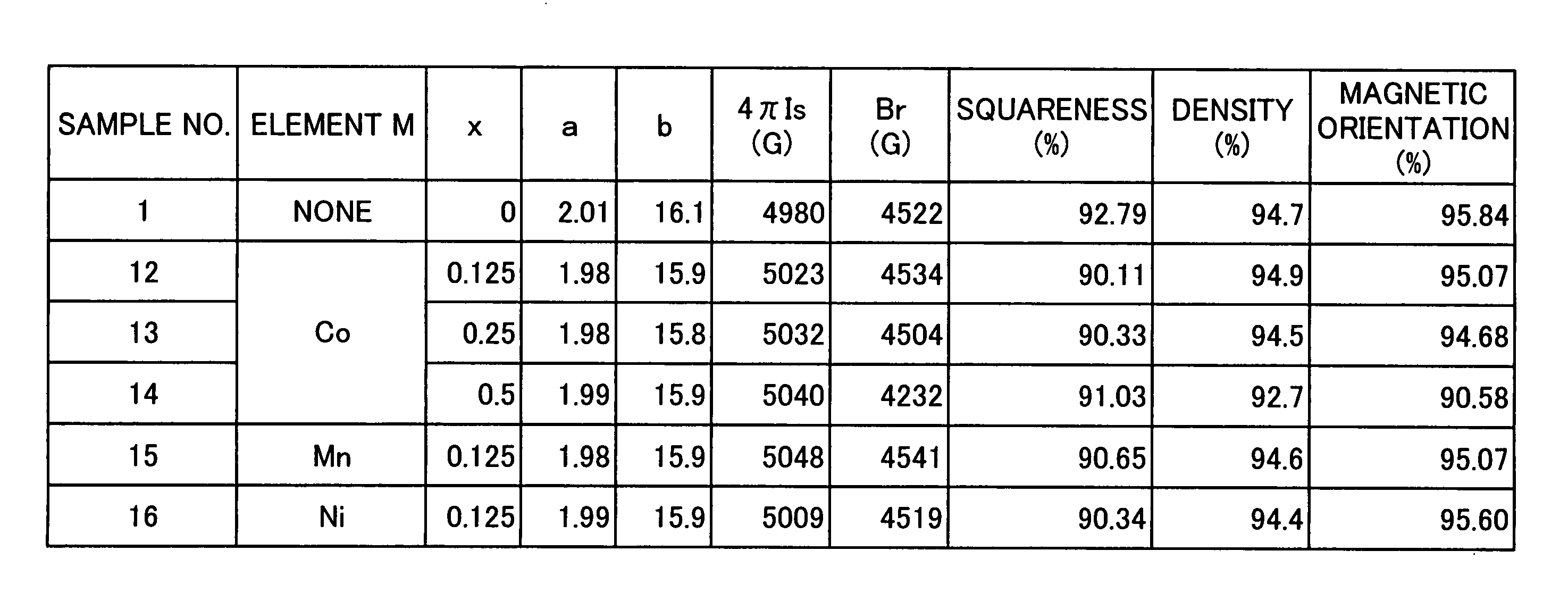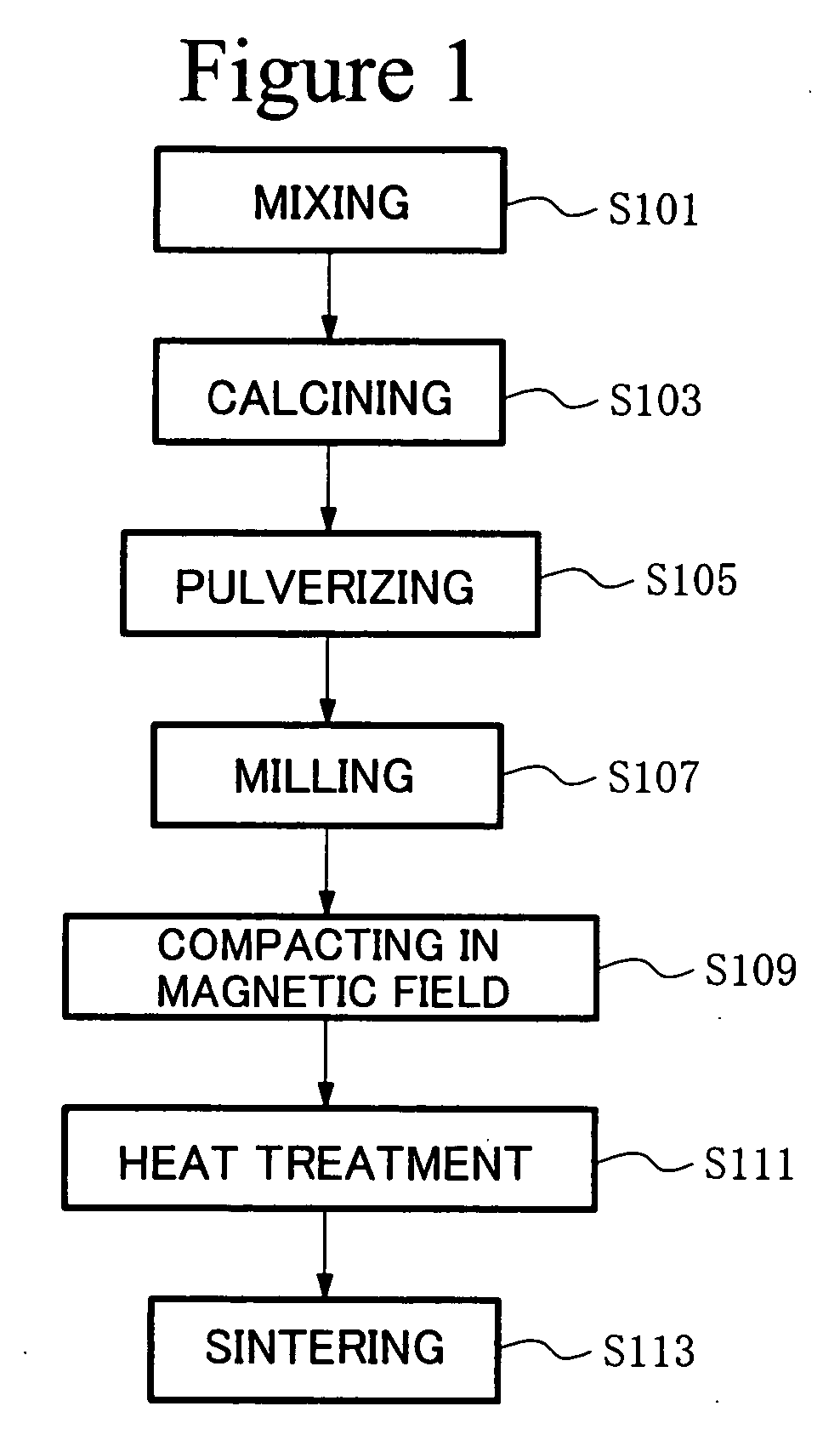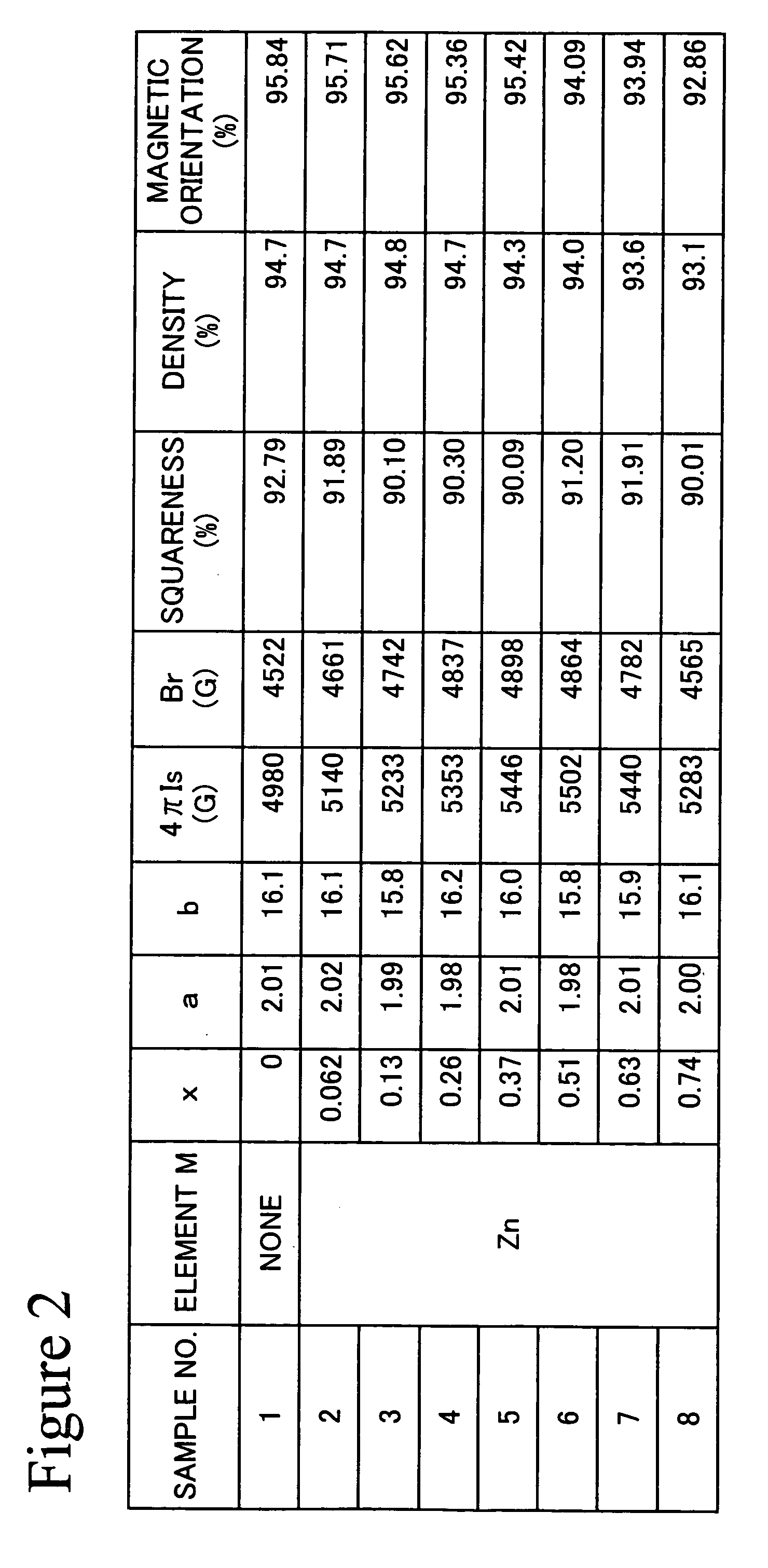Ferrite magnet powder, sintered magnet, bond magnet, and magnetic recording medium
- Summary
- Abstract
- Description
- Claims
- Application Information
AI Technical Summary
Benefits of technology
Problems solved by technology
Method used
Image
Examples
example 1
[0062] An experimental example, in which Zn was selected as element M, will be given below as Example 1.
[0063] The sintered magnet of the present invention was produced in accordance with the following procedures.
[0064] Fe2O3 powders (primary particle size: 0.3 μm), SrCO3 powders (primary particle size: 2 μm), and ZnO powders (primary particle size: 0.3 μm) were prepared as raw material powders. These raw material powders were weighed, resulting in given values. That is, each of the raw material powders was weighed, such that the composition of the finally obtained sintered magnet could be set within the range as shown in formula (1). After completion of the weighing, these powders were mixed and crushed using a wet attritor for 2 hours. Subsequently, the crushed powders were dried, and the particle size thereof was then regulated. Thereafter, the powders were calcined in a nitrogen atmosphere at 1300° C. for 1 hour, so as to obtain a powdery calcined body. 220 g of the calcined b...
example 2
[0080] Three types of sintered bodies (sample Nos. 9, 10, and 11) having the composition represented by the formula AFe2+a(1-x)MaxFe3+bO27, wherein the values of a, b, and x are shown in FIG. 9, were produced under the same conditions as those applied in Example 1 with the following exceptions. Thereafter, the magnetic properties of the sintered bodies were evaluated under the same conditions as those applied in Example 1. The results are shown in FIG. 9.
9>
[0081] The following types of additives and additive amounts were determined with respect to 210 g of the calcined body. [0082] SiO2 powders (primary particle size: 0.01 μm) 0.6% by weight [0083] CaCO3 powders (primary particle size: 1 μm) 0.7% by weight [0084] Sorbitol (primary particle size: 10 μm) 1.2% by weight [0085] Carbon powders (primary particle size: 0.05 μm) 0.25% by weight [0086] SrCO3 powders (primary particle size: 2 [m) 1.5% by weight
10>
[0087] The following types of additives and additive amounts were determined w...
example 3
[0104] An experimental example, in which Co, Mn, and Ni were selected as element M, will be given below as Example 3.
[0105] Five types of sintered bodies having the composition represented by the formula SrFe2+a(1-x)MaxFe3+bO27, wherein the values of a, b, and x are shown in FIG. 10, were produced in accordance with the same procedures as those applied in Example 1. Thereafter, the magnetic properties of the sintered bodies were evaluated under the same conditions as those applied in Example 1. The results are shown in FIG. 10. FIG. 10 also shows density and magnetic orientation.
[0106] As shown in FIG. 10, even when the Fe2+ site was partially substituted with any one of Co, Mn, and Ni, the sintered body had a 4πIs that was higher than sample No. 1 that had not been substituted, while exhibiting a good squareness of 90% or more.
[0107] In addition, the phase states of sample Nos. 12 to 16 were identified under the same conditions as those applied in Example 1. As a result, it was ...
PUM
| Property | Measurement | Unit |
|---|---|---|
| Fraction | aaaaa | aaaaa |
| Fraction | aaaaa | aaaaa |
| Magnetization | aaaaa | aaaaa |
Abstract
Description
Claims
Application Information
 Login to View More
Login to View More - R&D
- Intellectual Property
- Life Sciences
- Materials
- Tech Scout
- Unparalleled Data Quality
- Higher Quality Content
- 60% Fewer Hallucinations
Browse by: Latest US Patents, China's latest patents, Technical Efficacy Thesaurus, Application Domain, Technology Topic, Popular Technical Reports.
© 2025 PatSnap. All rights reserved.Legal|Privacy policy|Modern Slavery Act Transparency Statement|Sitemap|About US| Contact US: help@patsnap.com



